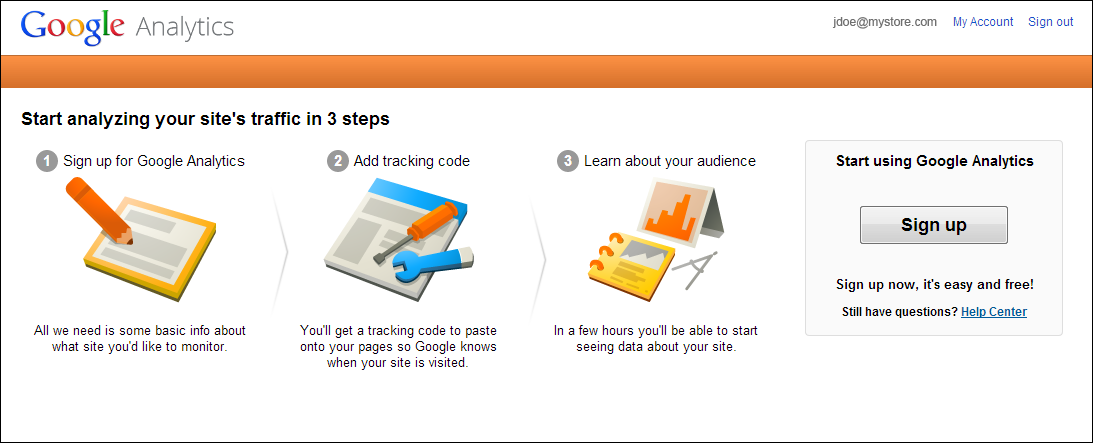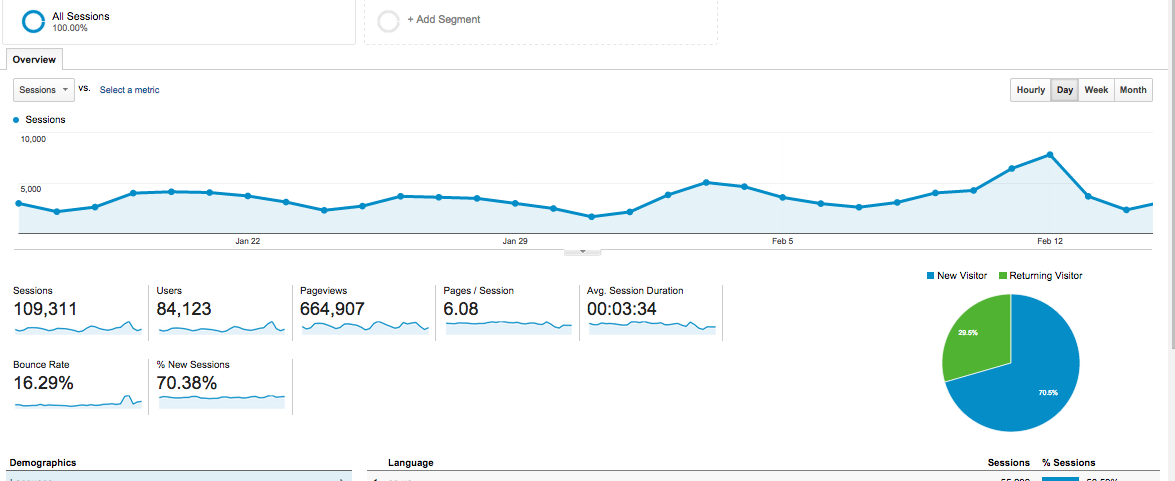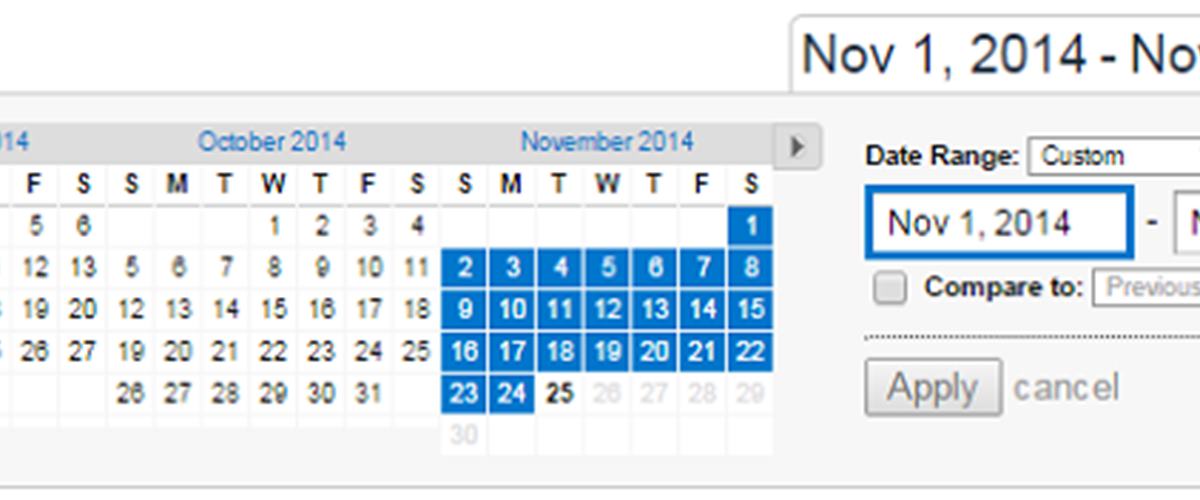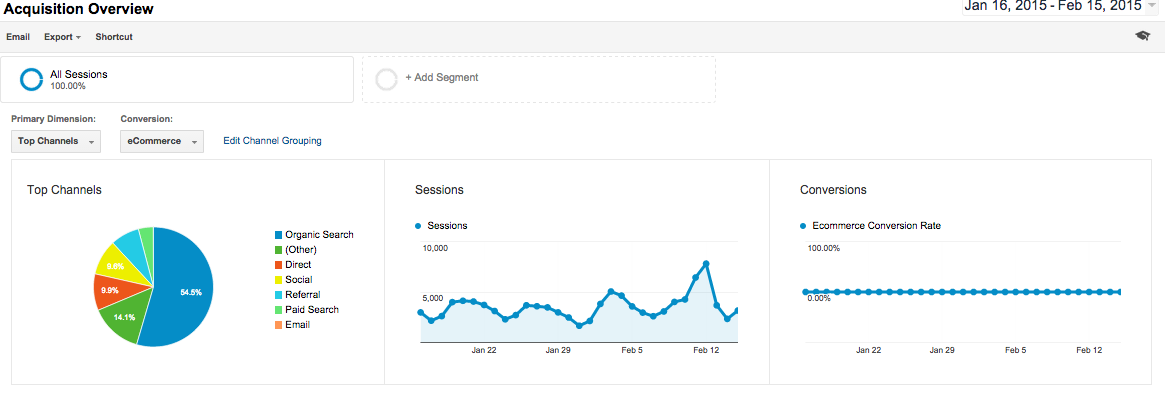Calling go-getting venue marketers! In this series we discuss the basics of online marketing for venues. We’ll talk about social media, SEO, search marketing and a lot more - all great (and often free) ways to generate new customers for your venue. Enjoy!
Now you have learnt the basics of setting up a website and optimising it for keywords, and have seen how building links from other high value websites will help you to build your online reputation, it’s time to start enjoying the rich data you get from visitors to your website.
There are lots of analytics tools out there, but a great place to start is Google Analytics. GA provides fascinating information into the type of people who are looking at your website, how they got there, and how they are using it. Best of all, it’s free!
We'll keep things simple in this post. We’ll look firstly at how to set up Google Analytics, and secondly at two of the sections which we think are most interesting for those starting out in online marketing – Audience, and Acquisition.

Setting Up
You only have to set up GA once. First up, click on the ‘Add New Account’ button on the top right hand side of this page. Follow the instructions from this page until you’ve submitted all of your details.
Installing the Google Analytics code onto your website takes a bit of care, and it might be worth asking your web developers to do this for you. We can help too, if you like.
Remember, you’re using a blogging platform of content management system such as Wordpress or Blogger, you just need to add the code once to your template or theme.
Once you’re in
Google Analytics really is a treasure-trove, and you can now learn so much about your business and your customers.
We won't go too deeply into all of GA’s features, but we’ve outlined a few of our favourite things below:

1. The Audience Section
Find the audience section on the left hand side of your screen. Among many other things, it tells you about the age, gender and location of visitors to your website.
It’s a great tool for informing your broader marketing strategy. If, for instance, you know that most of your audience are women aged 25-35, then you might decide to put money into new marketing channels which appeal to this demographic.
Or you might decide to only target women, rather than everyone, with your social media marketing – something we’ll come to later in the series.
It’ll even tell you what their interests are - it might be TV and Film, or Celebrities or Travel. Whatever it is, you’ll be able to find new ways to appeal to them.
Within the Audience section, you can also see important information such as Bounce Rate. Bounce Rate tells you how many people click ‘Back’ or navigate straight to another site after landing on your website. You should aim to keep Bounce Rate low, because Google frowns upon websites with a high Bounce Rate.
Check out your bouce rate every now and again – a sudden spike might indicate a problem with your website.
Most importantly, the Audience section tells you how many people have visited your website that day - or, indeed, any time period you choose by setting the calendar in the top right of the screen. Just choose the time period, and see your stats.

One great feature of this is the ‘Compare’ time periods feature. So you can see, for instance, how many visitors you had in one week or month, compared to another.
Perhaps you have gained some great PR for your venue and want to see what effect it has had on people coming to your website? You can compare the time period during which you were featured in a magazine or newspaper, or exhibited at a trade show, and compare it to the period just before to see what impact it had.
No more need for guesswork.
2. The Acquisition section

This is the place to find out how people are arriving at your website. The more online marketing you do, the more important – and fascinating – it becomes.
First up, a few definitions. These are the ways in which a customer might arrive on your website, and how they'll appear on GA.
- ‘Organic Search’ - This means people have found your website through a Google search. It means you are doing well on SEO.
- ‘Direct’ - This generally means people have searched for you directly, which means your brand is doing well. ‘Direct’ traffic isn't as accurate as it used to be, but it’s still a useful indicator.
- ‘Referral’ - This is where a visitor has clicked through to you from another website. Perhaps you have have been featured on a news site or partner website?
- ‘Paid Search’ - This is likely to be visitors from Google Adwords or another pay-per-click advertising channel. We’ll come to these later in the series.
- ‘Social’ - These are visitors from social media such as Facebook, Pinterest or Twitter.
- ‘Email’ - These will be people who have clicked on an email that you or someone else has sent out. Perhaps your newsletter?
Now you know where your visitors are coming from, you can start making some great assumptions about the best ways to market your venue. If traffic from Social Media is increasing, for instance, then it might be worth allocating some more resources to your Twitter or Facebook pages.
Or if another website sends you lots of great Referral traffic, then it might be worth considering building a closer relationship with them or striking a partnership.
The ‘Queries’ tab, within ‘Search Engine Optimisation’, is also very useful.

It allows you to see which keywords are sending people to your site. If one is proving popular, then it might be worth doing further optimisation around that keyword – or bidding for it with Google Adwords.
Ultimately, the Acquisition section of GA allows you to measure the effect of all of your venue marketing, whether it is online or offline. Knowing how people find your website is key to online marketing, and this gives the best idea of all.
So what are you waiting for?
As you’ll be able to see from your Analytics dashboard, there are plenty of features we haven’t covered in this post.
The ‘Behaviour’ section is a good one. It allows you to dig deeper into your website and see data for any individual page, or group of pages. It is particularly useful if you have been doing work around a certain section of your site.
Setting up Goals - within the Conversions tab - is another helpful feature, allowing you to set targets for your website (such as submitting a request through an enquiry form, or signing up to your newsletter) and then analysing exactly the path people took to get to reach that goal.
Like with all of analytics, you can cross-reference this with Audience, or with Acquisition, to get the clearest picture of how people are interacting with your site.
For now, though, the information provided within Audience and Acquisition should be more than enough to get started. The amount you can learn is huge, and it can help you become a better venue marketer very quickly. Enjoy!
The full series
Next time in the Digital Marketing Series for Venues we move into an area of online marketing which is becoming more important by the day – Social Media. See you then!
You can see the full breakdown for the series here - Online Marketing For Venues - Agenda, and view previous posts below:
- Introduction
- A brief history of online marketing
- On page SEO
- Linkbuilding
- Mobile
- Google Analytics
- Introduction to Content Marketing
- Introduction to Facebook Marketing
- Introduction to LinkedIn Marketing
- Introduction to Twitter Marketing
Email us on getonline@hirespace.com if you want to receive these updates direct to your inbox as soon as they go live. And do feel free to make suggestions in the comments box below if there are any topics you'd like us to cover. We're more than happy to add new subjects if there are any specific interests.
We're looking forward to helping venue managers drive more customers to their venues. As ever, please comment below for any suggestions or questions.
Author

Edward Poland
Co-founder of Hire Space. Making event planning a joy with the UK’s leading live venue marketplace.


